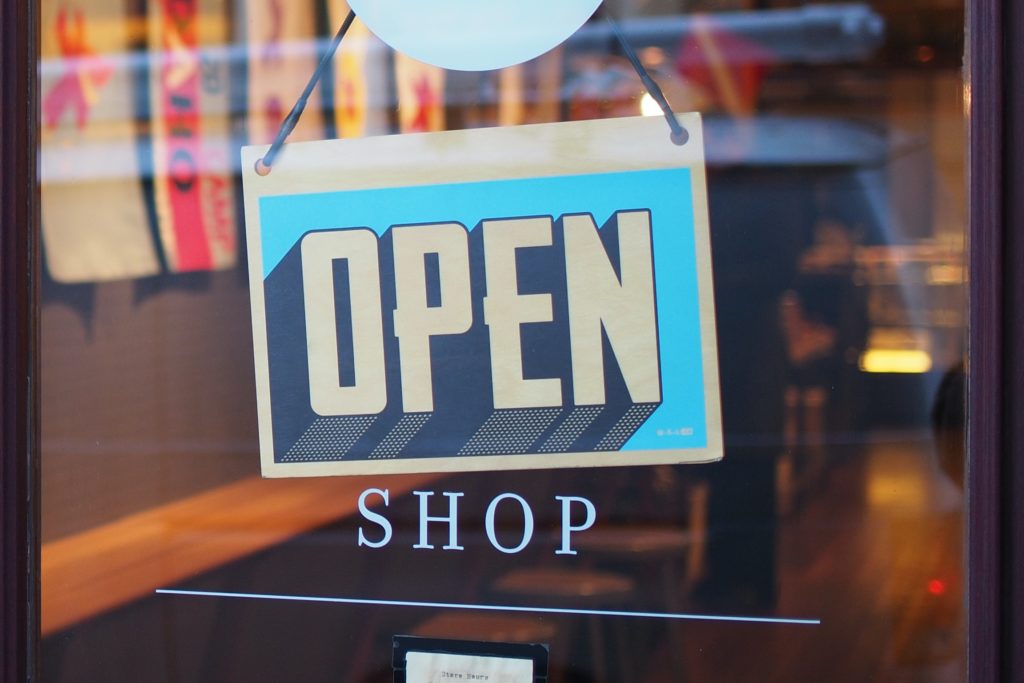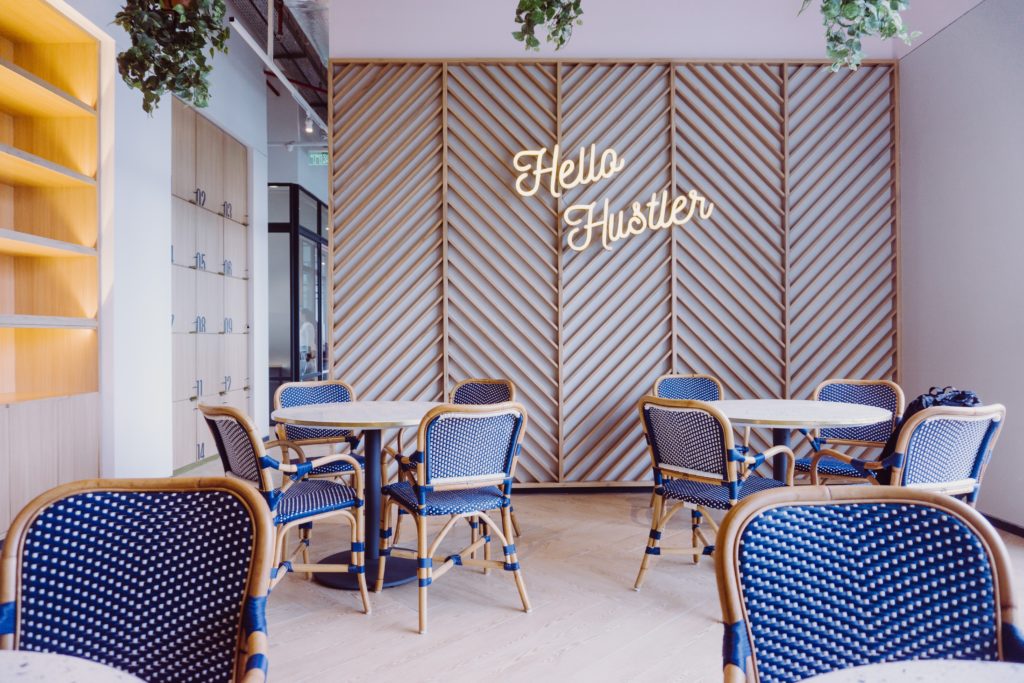Brand experience: It’s the elite feeling you get when unboxing the newest iPhone; the nostalgia you feel opening a Happy Meal; the “I’m never shopping here again” vow you take after receiving bad customer service for the third time in a row. Of course, you want your small business’s brand experience to be superior every step of the way. Fortunately, a brand experience agency like Charm School can help you develop so much more than a logo and style guide. Together, we’ll collaborate to build an entire brand aura that permeates every interaction your customers have with your business. That’s the ultimate way to build customer loyalty and differentiate your business from the competition!
What is a Brand Experience?
Simply put, a brand experience is how people feel, think, and react when they engage with your brand. From the emotions they associate with your business to the adjectives that come to mind when they think of it, a brand experience translates to the relationship a customer has with your business.
To better understand brand experience, let’s step into a customer’s shoes. Take Apple for instance. What do you think about when you hear that name? When Apple first launched its products, you may have felt cool and superior to have their products. Today, however, you may feel annoyed and devalued due to Apple’s decision to nickel and dime with a la carte options—even chargers!
A brand experience evolves over time. That may trend positively or negatively. For example, you may have adored a childhood friend. However, you grew apart when you hit puberty because they became a total jerk. A brand experience agency exists to ensure you evolve alongside customers and continue to deliver positive and unmatched experiences.
Benefits of a Positive Brand Experience
We’ve all had negative brand experiences. It’s the store you’ll never shop in again because of the clerk who treated you like Julia Roberts in “Pretty Woman.” Or, the tone deaf Tweet you read from a business you previously loved and respected. We don’t double up on negative brand experiences. They’re a one-and-done. Although, the opposite is also true.
When we have a positive brand experience, we come back for more. Customers are delighted by the product and/or service. They want to buy more from the business and tell others about it. Perhaps, they even become ambassadors for those brands. This even includes positive solutions to negative experiences.
Positive brand experiences result in long-term relationships with loyal customers. In other words, they guarantee future sales and word-of-mouth recommendations. There might not be anything as powerful for building your business as having people recommending you to others in their network.
Types of Brand Experiences
Here’s where things start getting a little bit tricky. Not every type of brand experience is a win for every customer. Instead, you have to think about your current and ideal customers and the type of brand experience they want to have. You also must consider the product or service you provide and how you want it to be known.
In fact, there are five types of brand experiences that people have with any given brand. Together, they sum up a person’s experience with your brand.
4 types of experiences customers have with brands:
- Customer Experience – What you want your customer’s engagement with your brand to be like. This could be anything from how you want them to feel when they’re in your brick-and-mortar store to what you want the experience of unboxing your product to be like for them.
- Employee Experience – What your employees think about your brand and their experiences as insiders matters. It’s reflected in how they treat your customers and how they build (or not) your brand’s reputation. In other words, you don’t want your employees (or even former employees) bad-mouthing your brand.
- Service Experience – How do you want customers to feel about your service? Is it clean and efficient, luxury and pampering, modern and upscale? How do you want your customers treated from the time they begin to engage with your brand?
- Product Experience – What do you want customers to think about your product? Is it a good value for the money? Or is it a delightful way to pamper themselves? Whether you have a product that’s tough enough to get the job done or delicate in a way that makes your customers feel elite, you want everything about your product to send that message.
The types of experiences your customers have with your brand should be unified and establish the identity you want for your business.
Elements of Brand Experience
So, what makes up a brand experience? How can you make sure the types of experiences your customers have with your brand are what you intend them to be? Consider the elements of brand experiences and unify them under the theme or feeling you want for your business.
Elements of great brand experience include:
- Brand Design – What does your brand look like? Your brand’s design should be consistent in everything from packaging to your website. Fonts, colors, logos, furnishings in your store… it all matters. For example, when you see that signature blue box, you know it’s from Tiffany & Co.
- Brand Voice – What does your brand sound like? This means word choice in your slogan, advertising, and on social media outlets, for example. Nike inspires you with everything from their “Just Do It” slogan to their awe-inspiring ads.
- User Experience – How people engage with your brand. What do you want their experience to be like at every step? For example, we can make our own dinner, so when we decide to splurge on dinner at a nice restaurant, we want every part of the experience, from when we’re greeted to dessert, to be a treat.
- Brand Image – How do you want people to view your brand? Think of adjectives you want people to use when they describe your brand, then build it accordingly.
How you present your business through design, voice, and experience all help create people’s image of it. That image is part of what determines whether they want to do business with you.
How to Define Your Brand Experience
Now, you understand the types of experiences and factors that influence how people feel about your brand. But what if you’re uncertain exactly how you want people to feel about your brand? You want them to like it, of course, but how do you unify all that stuff floating around in your head to create a likable brand?
1. Know Your Brand’s “Why”
Your business sells products or services in a specific category. But what’s the why behind that? What makes your brand stand out or differentiates it from competitors?
Gatorade doesn’t just make sports drinks. It makes the sports drink associated with true athleticism. If you’re a real athlete… if you’re a the top or your game… the message is clear: you must drink Gatorade.
Answer these questions. What does my brand sell? What makes it different from every other business that sells it?
2. Tell Your Brand Story
There are a lot of businesses out there that make pretty much the same products. Don’t believe us? Try to pick out a tube of toothpaste or a stick of deodorant when the one you usually buy is nowhere to be found. Holy cow! There are so many options that it’s difficult to choose.
Differentiating your product means telling its story. What are your company values? Do you offer a unique service and communicate this clearly? What ingredient do you offer that no one else does? Tell the story of that novel concept!
Can’t you just see that basketball player wiping sweat off his brow and taking a big drink of Gatorade? You don’t even need words. Athletes who train hard and play hard drink Gatorade.
3. Unify Your Messages
We mentioned this earlier, but it’s worth repeating: If you truly want people to feel a specific way about your brand, you have to unify every experience they have with you and every aspect of your brand to send that message.
What if we splurged for that fancy dinner out we mentioned earlier, then waited a while for our table? We would probably forgive the delay if we had a nice glass of wine and a velvet chair to sit in while we waited. The host walks us to our table in the dimly lit, gorgeously decorated restaurant. Then, we sit at the table and the server hands us stained and tattered paper menus full of $100+ entrees, and walks away without asking if you need anything. Suddenly, things aren’t syncing very well. You’re not in a fancy restaurant, you’re eating at a bad, expensive version of Chili’s. Your entire view changes of this restaurant.
When you’re unifying your brand’s message, you have to consider every detail of their experience. From placing the order, to packaging, and customer service… it all matters.
4. Listen to Feedback
As you craft your brand experience, you should ask customers for feedback on whether you’re hitting the mark. It could be as simple as asking how they would describe your brand to a friend. If you’re not getting something near the response you want (for example, bougie and luxury are probably both in the same ballpark), then ask them what would get them to that point. When they say the shopping experience was amazing, but the packaging seems cheap, change it. Keep gathering feedback and adapting until people’s brand experience hits the sweet spot.
5. Let Data Do the Talking
Some brand experience feedback comes in the form of numbers, analytics, and percentages. Look at your social media analytics, Google Analytics, and other metrics. Check out your website bounce rates. All of this information will tell you if customers like what they’re seeing, and if you need to make improvements.
How a Brand Experience Agency Can Help Small Businesses Grow
Defining your brand experience means thinking about how you want your customers to feel every time they interface with your business. A brand experience agency, or branding agency, like Charm School knows exactly how to turn your vision into a cohesive visual and editorial brand book.
Brand experience is worth cultivating. Positive experiences about your brand help you build relationships with loyal customers who become ambassadors for your business. If you need help establishing or implementing your brand experience, Charm School is here to help. From logo creation to website design and social media management, we’ll help you make every customers touchpoint with your business a positive one.
















